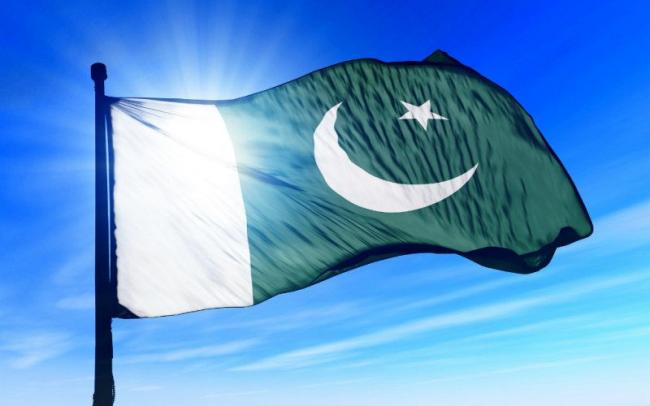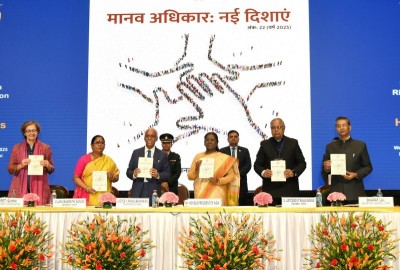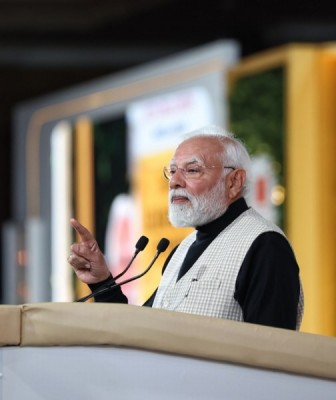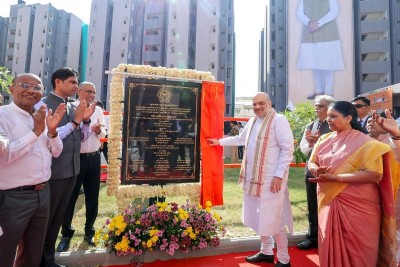
Sectarian Spite
District Police Officer (DPO) Mohammad Iqbal said the suicide bomber had tried to enter the shrine but a Police constable on security duty stopped him, after which the attacker detonated his explosives killing the constable and another 19 people. Balochistan Home Minister Sarfaraz Bugti added, "if he [the attacker] had managed to enter the Dargah, the death toll would have been much higher." The explosion occurred at 5.50 pm [PST] when the dhamaal - a devotional dance performed at shrines - was being performed after evening prayers. Islamic State (IS)/Daesh claimed responsibility for the attack.
On February 16, 2017, a suicide bomber had killed 88 people and injured more than 343 in an attack targeting the dhamaal celebration at the Lal Shahbaz Qalandar Sufi shrine in the Sehwan town of Jamshoro District in Sindh. Daesh had claimed responsibility for the attack.
Earlier, on November 12, 2016, at least 52 persons were killed and 102 others were injured in an explosion at the Sufi shrine of Shah Noorani in the Khuzdar District of Balochistan. The explosion took place at the spot where the dhamaal was being performed. At the time of the blast, at least 500 people had gathered to view the performance. Daesh claimed responsibility for the attack.
The first reported attack on a Sufi shrine in Pakistan since March 2000, when the South Asia Terrorism Portal (SATP) database commenced compiling data on terrorism-related fatalities in Pakistan, took place on March 19, 2005. On that day, at least 50 persons were killed and more than 100 others sustained injuries when a bomb exploded at a crowded gathering near the Pir Rakhyal Shah shrine (the location of the of October 5, 2017, incident). Between March 19, 2005, and October 5, 2017, terrorists carried out at least 16 attacks on Sufi shrines, killing 190 people and injuring more than 656. The prominent attacks on Sufi shrines in Pakistan include the following:
May 27, 2005: At least 25 people, including a suspected suicide bomber, were killed and approximately 100 others sustained injuries in an explosion at the Bari Imam shrine in the vicinity of the diplomatic enclave in the national capital, Islamabad. Lashkar-e-Jhangvi (LeJ) claimed responsibility for the attack.
March 3, 2008: At least 10 people were killed and six injured when Lashkar-e-Islam (LeI) militants lunched a rocket attack on the 400-year-old shrine of Abu Saeed Baba in Shiekhan village on the outskirts of Peshawar, the provincial capital of Khyber Pakhtunkhwa.
July 1, 2010: At least 40 persons were killed and 175 injured when three suicide attackers blew themselves up inside the shrine of Syed Ali Hajwairi popularly known as Data Gunj Bakhsh, in the Data Durbar area of Lahore in Punjab. The Tehreek-e-Taliban Pakistan (TTP) claimed responsibility for the suicide bombings.
October 7, 2010: Nine persons, including two children, were killed and over 65 sustained injuries when two suicide bombers blew themselves up at the shrine of Abdullah Shah Ghazi in the Clifton area of Karachi in Sindh. TTP claimed responsibility for the attack.
October 25, 2010: A bomb explosion at the eastern gate of the Baba Farid Ganj Shakar Shrine in the Pakpattan District of Punjab killed at least six persons, including three women, and injured several others. TTP claimed responsibility for the attack.
April 3, 2011: At least 41 persons were killed and more than 100 injured when two suicide bombers blew themselves up outside the shrine of Sufi saint Ahmed Sultan, popularly known as Sakhi Sarwar, in Dera Ghazi Khan District of Punjab. TTP claimed responsibility.
February 25, 2013: Three people were killed and more than 27 were injured in a bomb attack at Dargah Ghulam Shah Ghazi in the Maari village area of Shikarpur District in Sindh. The perpetrator group was not identified.
June 21, 2014: At least 52 persons were injured in an explosion during Urs (the annual religious congregation at the shrine) celebrations at Durbar Nangay Shah Pir Badshah in the Pind Parian area of Shahzad Town Police Station in Islamabad. No group claimed responsibility for the attack.
It is not just the Sufis who have been targeted by Sunni extremist terrorist formations in Pakistan. The country has a long history of sectarian violence. Pakistani terrorist groups, principally followers of the Sunni sect of Islam, have continuously targeted places of worship of other sects of Islam, claiming that these 'adversaries' do not follow correct interpretation of Islam. According to partial data compiled by SATP, at least 4,708 persons have been killed and another 8,165 injured in 1,592 incidents of sectarian violence since 2000.
For long, the primary players in this sectarian violence had been LeJ, TTP and LeI, who wanted to transform Pakistan into a Sunni state, primarily through violence. With the Pakistan military initiating lethal targeted operations against domestically oriented terror groups, like LeJ and TTP, and consequent significant reversers inflicted on them, Pakistan recorded a dramatic decline in all kinds of terrorism-related fatalities, including fatalities in sectarian violence. In 2016, Pakistan recorded 137 fatalities in sectarian violence, the second lowest on record since 2001. The lowest number of such fatalities, 121, was recorded way back in 2002. There has been, however, a significant surge in such fatalities in the current year - with at least 223 already killed (data till October 8, 2017).
The primary reason behind the surge in such violence is the growing influence of Daesh. Indeed, out of the last five foremost sectarian attacks (each resulting in more than 20 killings), three have been claimed by Daesh alone - the other two claimed by LeJ and Jamaat-ul-Ahrar (JuA), a breakaway faction of TTP.
The Pakistani establishment, however, remains in denial of Daesh's growing influence. The Foreign Office on September 29, 2017, denied the organised presence of Daesh in the country, saying that Pakistan remains immune to this terrorist formation. Earlier, on July 1, 2017, the Director General of the Inter Services Public Relations (ISPR) Major General Asif Ghafoor declared that there was no Daesh presence in Pakistan. Zahid Hussain, a Pakistani security analyst, noted on November 13, 2016,
IS may not have a formal structure in Pakistan, but certainly they have support among some of the banned terrorist groups, particularly Sunni sectarian groups like Lashkar-e-Jhangvi Al Alami (LeJ-AA). It's a kind of nexus that we are seeing between global jihadi groups and local sectarian groups.
The Pakistani military continues to highlight the 'successes' of the Army's efforts in combating terrorism across the country, but vulnerabilities persist. The losses that domestically oriented terror groups have suffered have created a vacuum, providing opportunities for formations such as Daesh to spread. The rise of Daesh in Pakistan, with the allegiance of local sectarian terrorist groups, is likely to fuel sectarian violence in the foreseeable future.
Islamist terrorism continues to flourish in Pakistan as a result of the state strategy of support to externally directed terrorist formations. Domestic terrorism remains essentially a blowback phenomenon, and will continue to afflict Pakistan as long as the establishment continues to support certain terrorist formations in its policy of using these as "strategic assets" against its neighbours.
Support Our Journalism
We cannot do without you.. your contribution supports unbiased journalism
IBNS is not driven by any ism- not wokeism, not racism, not skewed secularism, not hyper right-wing or left liberal ideals, nor by any hardline religious beliefs or hyper nationalism. We want to serve you good old objective news, as they are. We do not judge or preach. We let people decide for themselves. We only try to present factual and well-sourced news.







